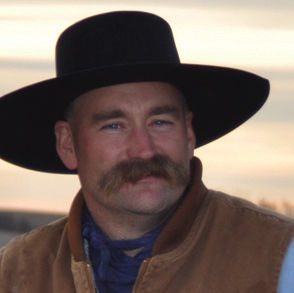I must be honest, it was simply amazing to be the emcee in front of 420 people on March 9 at Valentine High School in Valentine, Nebraska.
What was so amazing about it? Well, first off, all the folks showed up because they wanted facts about the biggest proposed “land grab” yet and also because it was like we have finally returned to somewhat normal activities with folks gathering. The 30-30 portion of President Joe Biden’s executive order “Tackling the Climate Crisis at Home and Abroad,” was signed Jan. 27, 2021, with a promise to use 30% of the land and water in the United States to curb climate change by 2030.
I actually tried reading the entire order on the White House.gov website and, after an hour, I was barely into it and had to get on to other things. First, it is not just about taking land from landowners but it is also about shutting down your fuel supply. In the interest of giving you a quick glance at the agricultural part of this debacle, I will share a couple pieces directly from the document.
“The Federal Government must protect America’s natural treasures, increase reforestation, improve access to recreation, and increase resilience to wildfires and storms, while creating well-paying union jobs for more Americans, including more opportunities for women and people of color in occupations where they are underrepresented. America’s farmers, ranchers, and forest landowners have an important role to play in combating the climate crisis and reducing greenhouse gas emissions, by sequestering carbon in soils, grasses, trees, and other vegetation and sourcing sustainable bioproducts and fuels.”
Let’s take a closer look at this. We once had resilience to wildfires and then the government removed the sustainable utilization of logging and grazing. After that, wildfires exploded throughout the West.
This one is short and so precious:
“The initiative shall aim to conserve and restore public lands and waters, bolster community resilience, increase reforestation, increase carbon sequestration in the agricultural sector, protect biodiversity, improve access to recreation, and address the changing climate.”
Are we not already doing all of that? The only reason public lands are not healthy is because the federal government has not managed the population of feral horses as their own act and order demands. Private landowners have worked diligently at every possible avenue to improve environmental quality.
Now let’s get to the real meat of the issue:
“Sec. 216. Conserving Our Nation’s Lands and Waters. (a) The Secretary of the Interior, in consultation with the Secretary of Agriculture, the Secretary of Commerce, the Chair of the Council on Environmental Quality, and the heads of other relevant agencies, shall submit a report to the Task Force within 90 days of the date of this order recommending steps that the United States should take, working with State, local, Tribal, and territorial governments, agricultural and forest landowners, fishermen, and other key stakeholders, to achieve the goal of conserving at least 30 percent of our lands and waters by 2030.”
What exactly does that mean? Especially when you consider that the federal government already owns 33% of the U.S. land mass. Furthermore, that is a direct violation of the Constitution. The Constitution permits the ownership of forts for protection; it says nothing about owning vast amounts of land. The Property and Environment Research Center has clearly documented that federally owned land is the most poorly managed property in the U.S. It documents that when local management is allowed to control it, the land and water are taken care of much better. So that begs the question, “Why is the worst land steward in the country trying to increase the size of their outfit? Easy—because we are letting them.
I have not even touched on the core of this executive order, which is to halt any new oil exploration and put a damper on the energy production we already have. The U.S. consumer could soon feel the up close and personal pain we are talking about when we say that domestic food and energy production are a means of national security. However, if we continue to let the train steam down this track, we won’t have the land or the fuel to produce the food, fiber, fuel and pharmaceuticals to supply our own people. We need to derail this “loco” motive now.
Editor’s note: Trent Loos is a sixth generation United States farmer, host of the daily radio show, Loos Tales, and founder of Faces of Agriculture, a non-profit organization putting the human element back into the production of food. Get more information at www.LoosTales.com, or email Trent at [email protected].
